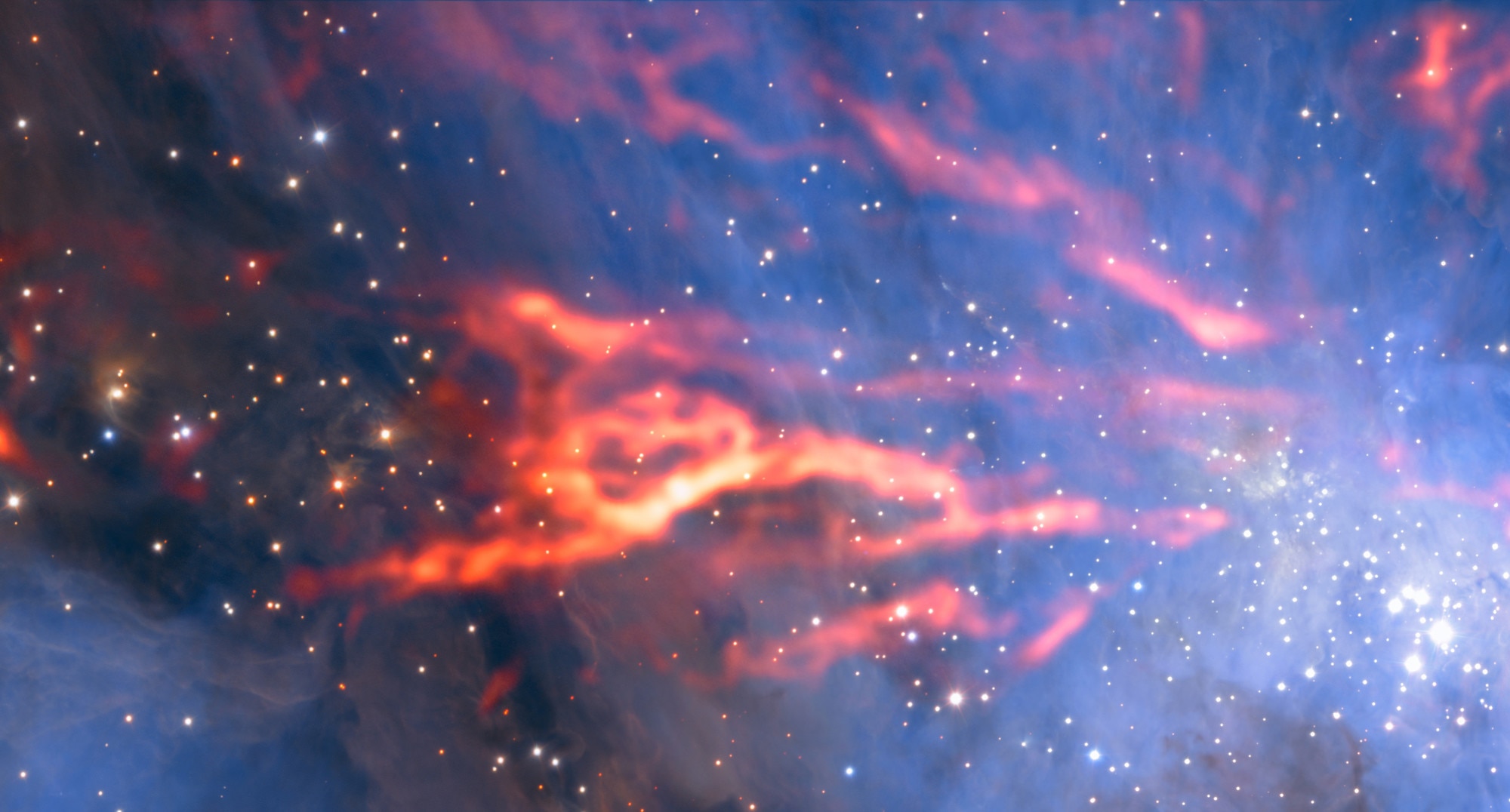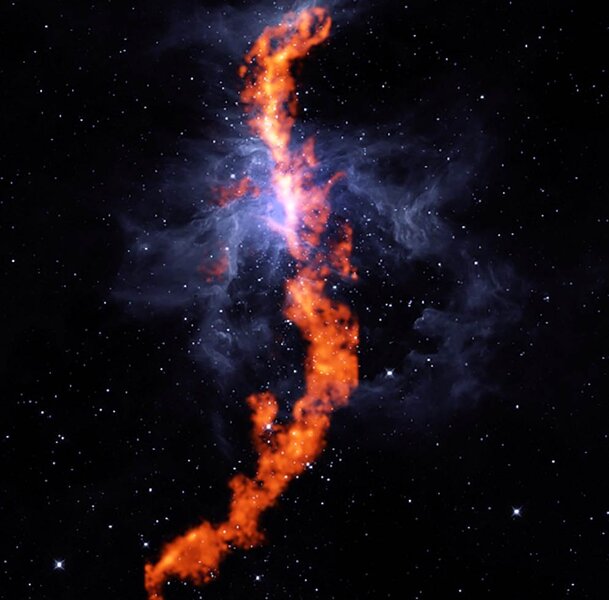Create a free profile to get unlimited access to exclusive videos, sweepstakes, and more!
Orion's filaments of star birth

Our galaxy is hairy.
Well, that's not quite true. It's more filamentary. Like, loaded with strands, filaments, of gas and dust running through it. These can be light-years long, though very narrow. They are thought to form as streams of material in a rotating galaxy converge and collide; it's also possible the turbulence created when stars explode helps this process along.
A recent series of observations seemed to indicate that no matter where you look in the galaxy, these filaments are all about 1/3 of a light-year wide, indicating some overarching process forming them (and in fact, when you work out the complicated physics of the situation, that's about the width you'd expect to get with supernovae stirring up the thin soup of stuff between the stars in our galaxy).
This may seem pretty academic, but it's actually critical for you being able to read these words: You may very well owe your existence to filaments like this! These are the sites of star formation, and not to put too fine a point on it, the Sun is a star. One thing we astronomers love to do is figure out how stars are born, and these filaments are a wonderful place to watch it in action.
So this universal width law is interesting. But is it really the case?
A team of astronomers used the ALMA observatory to observe the nearest big site of star formation: the Orion Molecular Cloud (OMC) complex, home of the famous Orion Nebula. It's 1,350 light-years from us, making it pretty close in galactic terms, so it can be studied in detail. ALMA — the Atacama Large Millimeter/submillimeter Array — is sensitive to the light emitted from very cold objects, which is perfect for these filaments, which are at a temperature of about 20 K (-250° C!). It also has superb resolution, allowing it to see very fine details.
And what did they see? Well, this:
WHOA. You should grab the very high-res version of that, because it's incredible! This shows an 8-light-year-long stretch of Orion; the four stars on the left make up the Trapezium, the heart of the Orion Nebula, a quartet of young (a few million years old) and very massive stars, luminous powerhouses that light up most of the region.
The overall structure shows a long filament, one of zillions in our galaxy. It's made up of substructures: all those fingerlike fibers, each some fraction of a light-year long. Because they're roughly linear, astronomers talk about how much material they have per unit length. Small ones have less than 35 times the mass of the Sun along a one-light-year-long piece. Bigger ones can have up to 1,000 times the Sun's mass of gas and dust in that same length! In this case, these fibers (about 55 seen in total) have about 150 times the Sun's mass per light-year. So it's middlin' big.
There's a lot going on here, obviously, but what's so very interesting is that ALMA's superior eyesight allowed astronomers to measure the width of these fibers, and what it found is that the average fiber is only about 0.1 light-years wide (roughly a trillion kilometers), which is far narrower than expected if the "universal law" was correct. Some are wider, some thinner, but overall they clearly show the universality of the previous observations is incorrect.
The astronomers who did this work speculate that the problem may be in how the older observations were done; systemic effects in the observations themselves were making the fibers appear wider.
That's important! If they're narrower, but the mass contained in the them is still the same, that means they're denser. The density of a gas (along with temperature and composition) is a big factor in star formation, so this will affect how astronomers understand how stars are born. It's a fantastically complicated process, and it's critical we understand all the pieces that go into it.
The overall structure here is pretty cool, too. The region is divided into two broad areas, OMC-1 on the left (closer to the Orion Nebula) and OMC-2. Right away you can see that there appear to be two networks of fibers, each aligned differently. The astronomers think the fibers may be falling along the structure of the local gravitational field; in a dense cloud like this must be an unholy mess, with clumps of gas and stars forming all contributing to it. These fibers may be literally lighting up that structure, similar to how water in a river shows you a local elevation minimum.
I'll note too that this is one small section of a vastly larger complex called the Integral Shaped Filament, because, well, it's shaped like a mathematical integral sign, as you can see in this image taken using WISE and the Green Bank Telescope:
The new ALMA observations are centered just above the brightest part of that image in the top middle. That huge structure is 50 light-years long, so you can make a lot of stars along it. Thousands. Hundreds of thousands!
It wasn't that long ago that we didn’t even know these filaments existed, and now we know how important they are to making stars. It's an aspect of astronomy, and science in general, that I just love: The more we look, and the more kinds of ways we look — different observatories, different kinds of light — the more we find out the Universe has greater complexity, and possesses greater stunning beauty, than we had supposed previously.




























